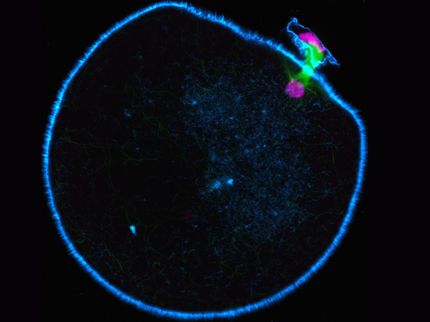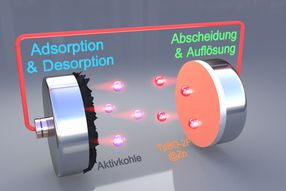Molecular stop signal identified
The sophisticated surveillance system of cell division
Several million cells divide every second in our bodies. During nuclear division (mitosis), the genetic material must be distributed correctly and completely between the daughter cells - errors in this process can lead to defective developments or genetic disorders, and many cancer cells are also characterised by unequal numbers of chromosomes. Therefore, if errors in the division process become apparent, the cell can stop it. Biologists at the University of Duisburg-Essen have been able to elucidate this process at a molecular level. The scientific journal ‘Current Biology’ has published their findings
During cell division, mitotic spindles are formed - tiny fibres that originate at opposite poles of the cell and bind to the chromosomes to pull one representative of each sister chromatid into one of the two resulting cells. A sophisticated monitoring system is in place to prevent errors during cell division. This system sends a ‘Stop! Don't divide yet!' signal to the cell as long as not all chromosomes have correctly connected to the mitotic spindle.
Researchers from the University of Duisburg-Essen (UDE) and colleagues from the Max Planck Institute of Molecular Physiology in Dortmund, have now been able to gain new insights into the molecular mechanism of this surveillance system. They discovered how the initiator of the stop signal, a protein kinase called Mps1, is bound to the attachment site of the chromosomes and how it is only dislodged once the chromosomes are correctly bound to the mitotic spindle. The study, carried out in the Collaborative Research Centre 1430 Molecular Mechanisms of Cell State Transitions at the UDE, answers long-standing questions about the mechanism of the molecular stop signal and how it is switched off: ‘We were able to establish that Mps1 is involved in other processes of chromosome division in addition to the initiation of the stop signal,’ explains Richard Pleuger, first author from the research group Molecular Genetics I headed by Prof. Dr Stefan Westermann. ‘In future, the mutants we have established could be used to investigate further aspects that are still poorly understood."
Predictions of atomic protein structures and binding surfaces using artificial intelligence (AI) were particularly important for the project. In the future, AI-inspired, precise experiments promise further insights into the mechanism of cell division – for example, to clarify how faulty attachments are recognised and corrected.
Original publication
Other news from the department science

Get the life science industry in your inbox
From now on, don't miss a thing: Our newsletter for biotechnology, pharma and life sciences brings you up to date every Tuesday and Thursday. The latest industry news, product highlights and innovations - compact and easy to understand in your inbox. Researched by us so you don't have to.























































